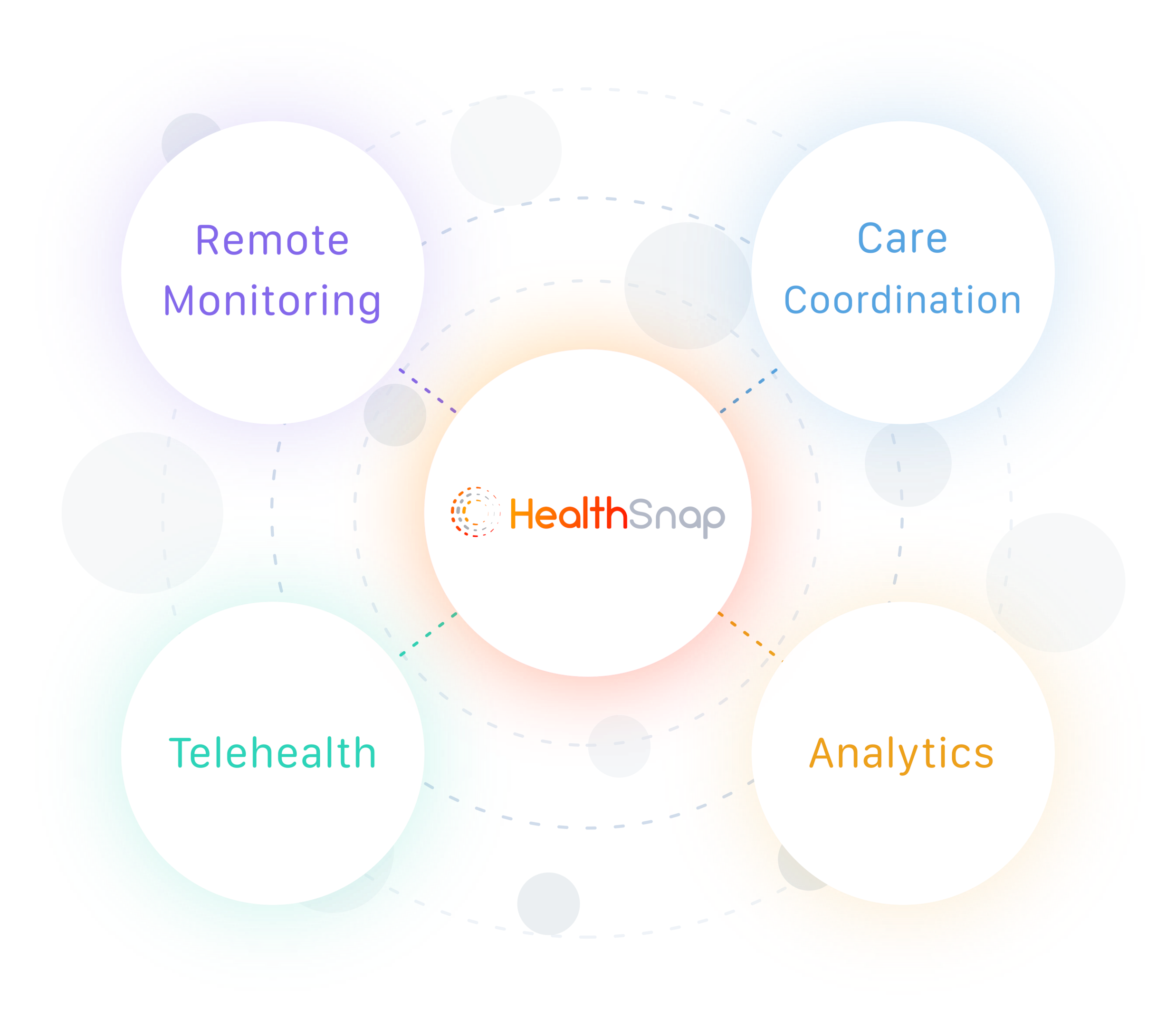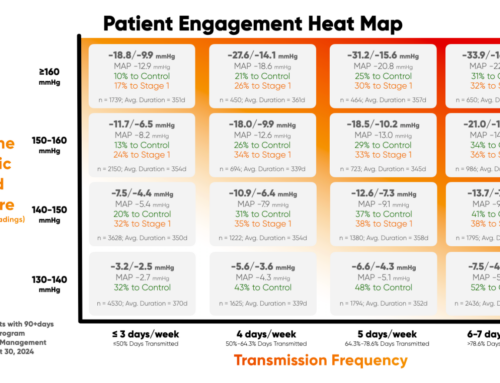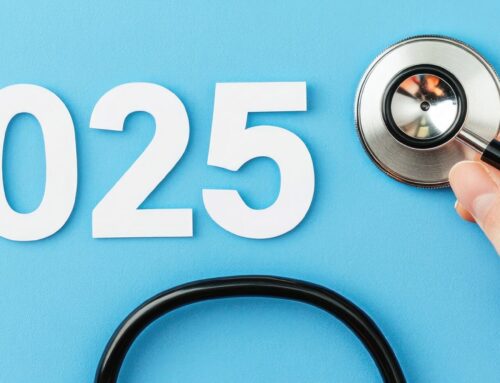Remote Therapeutic Monitoring (RTM) is a new and promising virtual care management program that complements Remote Patient Monitoring (RPM) to help achieve better patient outcomes. RTM covers non-physiologic therapeutic data, such as pain levels, adherence to medications, and adherence to therapy as a source of insight into the management of chronic conditions. The patient uses Remote Therapeutic Monitoring devices to automatically record and report health data to the care team for more effective care strategies and delivery.
How does Remote Therapeutic Monitoring Differ from Remote Patient Monitoring?
RPM or Remote Patient Monitoring involves the use of cellular-enabled (or another mobile technology) devices to capture and transmit physiological data of a patient in near real-time to the care team. This type of patient data may include readings of their weight, temperature, pulse rate and oxygen levels, blood pressure levels, and blood glucose levels.
On the other hand, Remote Therapeutic Monitoring (RTM) captures and reports non-physiological patient data, such as their pain levels, therapy adherence, and medication adherence. The information collected through RTM may be both quantitative and subjective in nature. Healthcare providers may be able to make more comprehensive patient evaluations and determine more effective care strategies when they have access to both RPM and RTM data.
Advantages of Remote Therapeutic Monitoring
Some of the important benefits of Remote Therapeutic Monitoring may include:
- Valuable insights into therapy adherence and patient satisfaction levels
- Improved patient outcomes in terms of pain levels and functional ability
- Timely interventions in sync with actual patient response to the care program
- Increased levels of patient engagement, motivation, and rapport with the care provider
- Increased patient participation and better understanding and education about their condition
- More independent self-management of the chronic condition by the patient
- More data-driven decision-making by the care providers potentially leads to a reduction in adverse outcomes
- Potential reduction in costs and a lower burden on the healthcare system as patients receive more proactive care
New CPT Codes: A Game-Changer for RTM Services
The Centers for Medicare & Medicaid Services (CMS) along with the CPT Committee of the American Medical Association introduced the concept of Remote Therapeutic Monitoring in 2022 and has provided exciting new updates in the 2023 proposed Medicare Physician Fee Schedule with the addition of 4 new RTM CPT codes.
HCPCS code GRTM1: Remote therapeutic monitoring treatment management services, physician or NPP professional time over a calendar month requiring at least one interactive communication with the patient/caregiver during the calendar month; first 20 minutes of evaluation and management services
HCPCS code GRTM2: Remote therapeutic monitoring treatment management services, physician or NPP professional time over a calendar month requiring at least one interactive communication with the patient/caregiver over a calendar month; each additional 20 minutes of evaluation and management services during the calendar month (List separately in addition to code for primary procedure)
HCPCS code GRTM3: Remote therapeutic monitoring treatment assessment services, first 20 minutes furnished personally/directly by a nonphysician qualified health care professional over a calendar month requiring at least one interactive communication with the patient/caregiver during the month
HCPCS code GRTM4: Remote therapeutic monitoring treatment assessment services, additional 20 minutes furnished personally/directly by a nonphysician qualified health care professional over a calendar month requiring at least one interactive communication with the patient/caregiver during the calendar month (List separately in addition to code for primary procedure)
Until recently, RTM allowed healthcare providers to bill only for remote patient management for respiratory and musculoskeletal conditions based on medical devices that obtain and transmit non-physiologic patient data. Prescribing physical therapy and home fitness programs has been a standard practice for rehabilitation therapists. Moreover, medical providers until now were not incentivized to engage with patients between therapy sessions in order to monitor, guide, and support adherence to the rehab programs.
With the proposed launch of the new CPT codes by CMS for 2023, healthcare providers can claim reimbursement for collecting and analyzing “therapeutic data” utilizing Remote Therapeutic Monitoring and virtual patient engagement tools and techniques. This change has opened up new and significant revenue streams for healthcare companies, and increased the potential for better patient outcomes, creating a win-win for all.
Who is Eligible to Bill for Providing Remote Therapeutic Monitoring?

CMS has stated that doctors as well as other “qualified and eligible healthcare professionals” are allowed to bill for providing Remote Therapeutic Monitoring services. According to CMS, in the final rule, it expects that physiatrists, physical therapists, and nurse practitioners may be the primary billers with regard to RTM codes. But other healthcare providers are also eligible to use the codes too, such as speech-language pathologists, occupational therapists, physician assistants, and clinical social workers.
Remote Therapeutic Monitoring: New CPT Codes for 2022
The CPT code changes in 2022 and the inclusion of new RTM codes have increased the use of Medicare coverage for patients signed up for remote monitoring programs that are beyond the scope of Remote Patient Monitoring. This is an essential breakthrough in telehealth and digital health 2022 reimbursement plans.
According to industry experts, healthcare practitioners and providers that were until now unable to bill for Remote Patient Monitoring CPT codes will now have an opportunity to claim reimbursement under the new RTM 2022 CPT codes. The 2022 Remote Therapeutic Monitoring codes include:
CPT Code 98975
Similar to the RPM CPT code 99453, it covers the initial set-up of equipment and patient education regarding the use of the monitoring equipment. The code permits healthcare providers to bill for at least one episode of care. The delivery of care begins with the activation of the Remote Therapeutic Monitoring services and culminates when the specific treatment goals have been accomplished.
CPT Code 98976
Remote Therapeutic Monitoring devices, particularly required for the respiratory system status, require the CPT code to be supplied with scheduled (for example, daily) recordings and/or programmed alerts for transmissions for the monitoring of respiratory systems by appropriate providers, every 30 days.
CPT Code 98977
RTM devices, particularly required for the musculoskeletal system status require the CPT code to be supplied with scheduled (for example, daily) recordings and/or programmed alerts for transmissions for musculoskeletal system monitoring by appropriate providers, every 30 days. The CPT codes 98976 and 98977 are both billable once every 30 days of Remote Therapeutic Monitoring.
CPT Code 98980 and 98981
Remote Therapeutic Monitoring treatment providers or physicians that are well-qualified in healthcare delivery require at least one interactive communication (through phone call or video) in a calendar month with the patient or their caregiver. CPT code 98980 requires at least the first 20 minutes of time dedicated per month to the patient’s Remote Therapeutic Monitoring and management. Each additional 20 minutes of time is billable under CPT code # 98981.
Additional Key Takeaways with the 2022 RTM CPT Updates
Therapeutic Data
Under the new Remote Therapeutic Monitoring CPT codes, patient data on indicators like pain levels, medication and therapy adherence, and medication and therapy response can be collected and billed. CMS recognizes “therapeutic data” (and not just “physiological data”) as an essential patient information category that can be remotely examined under the new codes. On the other hand, Remote Patient Monitoring (RPM) codes can only be applied when physiological data is tracked (such as pulse, temperature, blood sugar, and blood pressure levels).
Two Body Systems Covered
CPT code 98976 is exclusively focused on respiratory system status monitoring, while CPT code 98977 is exclusively focused on musculoskeletal system status monitoring. Other systems, such as endocrine, neurological, vascular, and digestive, are not covered under the present RTM supply codes.
General Medicine Services
Physicians as well as other qualified healthcare providers can bill Remote Therapeutic Monitoring as general medicine services. Occupational therapists (OT), physical therapists (PT), speech-language pathologists, physician assistants, and clinical social workers could also have eligibility to claim reimbursement under RTM codes. As per the final rule, the primary billers will be physiatrists, physical therapists, and nurse practitioners.
Not Wellness Devices
For the purposes of Remote Therapeutic Monitoring, only such medical devices may be used as defined by the Food, Drug, and Cosmetics Act. In other words, it should not simply be a wellness device.
Self-Reported Data
Patients may self-report the RTM data or it may be digitally transmitted through the RTM device. Although the medical equipment used must conform to the definition of a medical device as per the FDA, CMS states that RTM data reported through a smartphone application or a digital platform classed as SaMD (software as a medical device) could also qualify for reimbursement.
Remote Therapeutic Monitoring: Frequently Asked Questions
Does RTM only cover musculoskeletal and respiratory conditions?
Yes, under the current CPT codes, eligibility for RTM device supply reimbursement is limited to only two clinical use cases: musculoskeletal and respiratory conditions. The current codes do not encompass other conditions, such as neurological, endocrine, digestive, or vascular.
CMS acknowledged in the final rule that it has received suggestions regarding the creation of a general device code that would be system agnostic and will not limit the reimbursement under Remote Therapeutic Monitoring only to the current two systems. Industry observers are hopeful that in the future, CMS may include an expanded list of chronic conditions.
How are Remote Therapeutic Monitoring codes classified?
The classification of RTM codes has been determined as general medicine codes, and not as E/M (Evaluation and Management) codes. This is in contrast to Remote Patient Monitoring codes that have been classified as an E/M service.
Is billing under general supervision permitted for RTM?
As of 2022, no. Considering the fact that CPT codes 98980 and 98981 (the two treatment management RTM codes) are not E/M codes, it is not possible to designate them under the category of care management services. In other words, a healthcare provider cannot bill for Remote Therapeutic Monitoring services while having non-physician practitioners (remote-based) perform the services under general supervision.
In the 2023 proposed MPFS, we are excited to see that CMS has expanded the scope of CPT Codes to include two new E/M codes that would support general supervision of RTM:
HCPCS codes GRTM1 and GRTM2 are evaluation and management (“E/M”) codes that, if finalized, will be billable by physicians and NPPs (nurse practitioners and physician assistants, among others) otherwise eligible to bill E/M codes. CMS also proposed to designate these two codes as “care management” services to allow for general supervision of auxiliary staff who provide services incident to the billing practitioner. This is a much-needed improvement to the direct supervision requirements for RTM CPT codes 98980 and 98981 and is a direct result of stakeholder feedback to CMS explaining why “general supervision” for staff providing care management services like RTM is critical to a successful business model.
Are RTM supply device codes subject to the “de minimis” standard?
The device codes are not subject to the “de minimis” standard, but the education code is. CMS has designated the 5 RTM codes in its final rule as “sometimes therapy” codes. What this means is that Remote Therapeutic Monitoring services, when offered by a physician and certain non-physician practitioners, can be billed outside a therapy plan of care – but only when appropriate.
CMS says that CPT codes 98976 and 98977 (the RTM device codes) are not subject to the de minimis standard, which determines the threshold for the payment adjustment that is statutorily applicable to therapy services. Based on this, patient education and initial set-up services under CPT code 98975 are subject to the de minimis standard, which determines payments to therapy assistants.
How many days of health data should the RTM device monitor?
According to the new CPT codes, the Remote Therapeutic Monitoring device must monitor a minimum of 16 days of patient data (in total) for each period of 30 days.
Can a patient self-report the RTM data?
Yes. CMS stated in the final rule that data self-reported or self-entered by the patient could be included as valid non-physiological data for purpose of Remote Therapeutic Monitoring codes.
Make Your Care Teams More Effective with HealthSnap’s Virtual Care Management Platform

The CPT code changes for virtual care management in 2022 and proposed changes for 2023 are paving the way for the creation of improved patient care between office visits and new revenue streams for healthcare providers. By partnering with HealthSnap, you can easily start and scale our turnkey Virtual Care Management solution, including our Remote Therapeutic Monitoring (RTM), Remote Patient Monitoring (RPM), and Chronic Care Management (CCM) services more easily, effectively, and profitably.
HealthSnap’s integrated Virtual Care Platform is designed to deliver comprehensive and customizable solutions for modern chronic disease management to fit the unique needs of your healthcare organization. To learn more about the company or to request a demo of its RPM program, call today at 888-780-1872 or click here to schedule a consultation.






